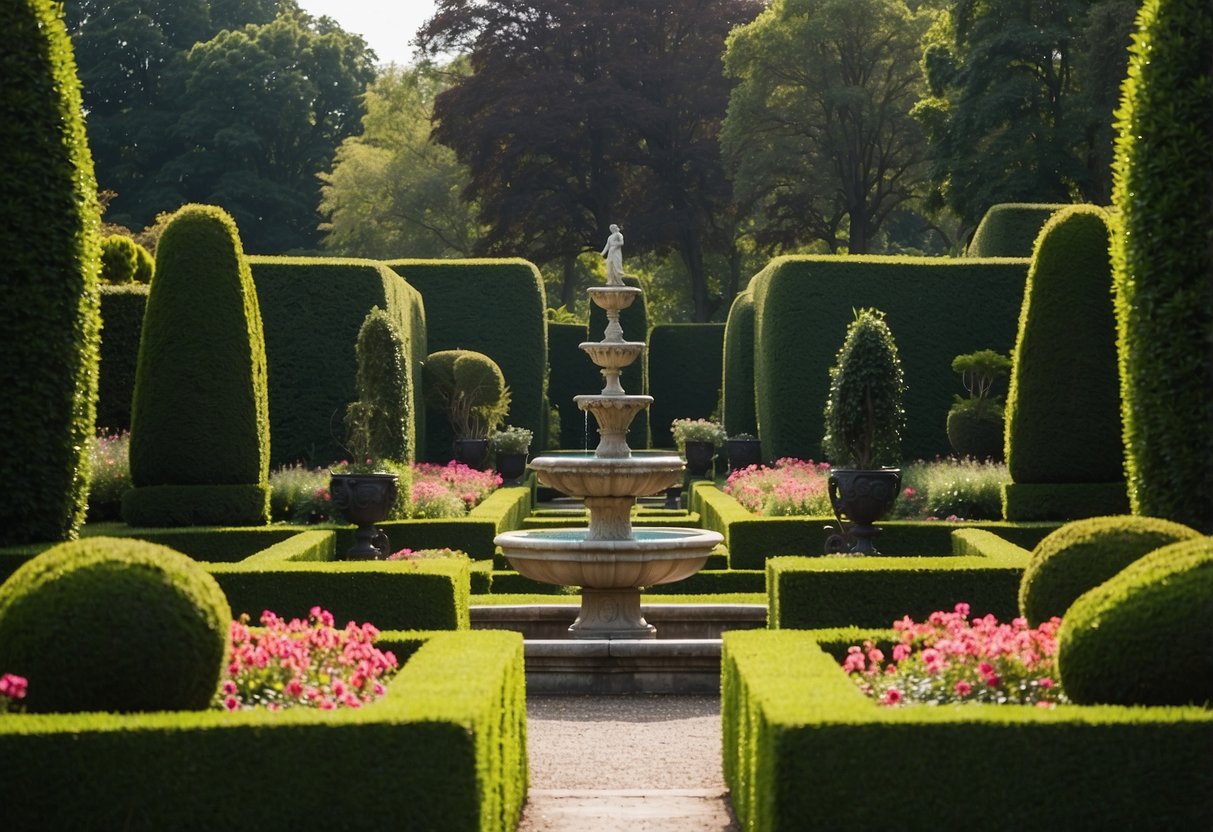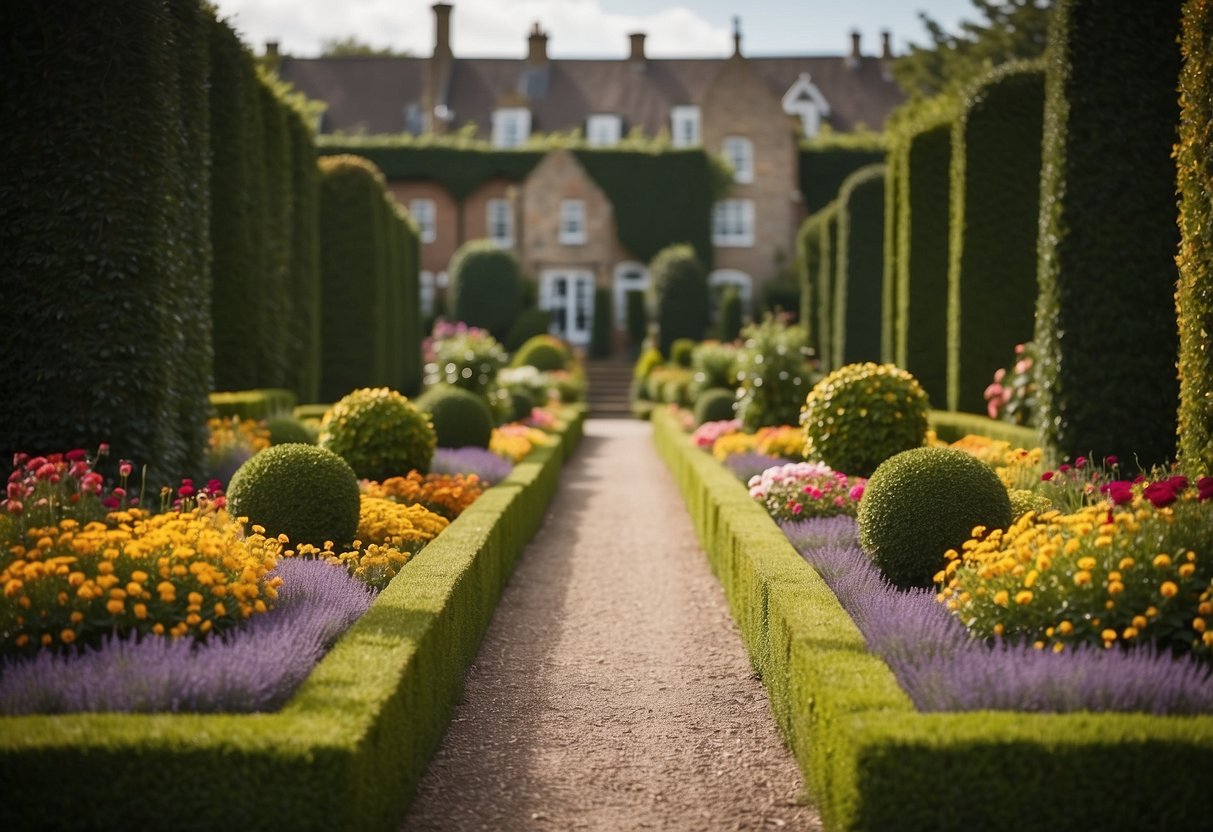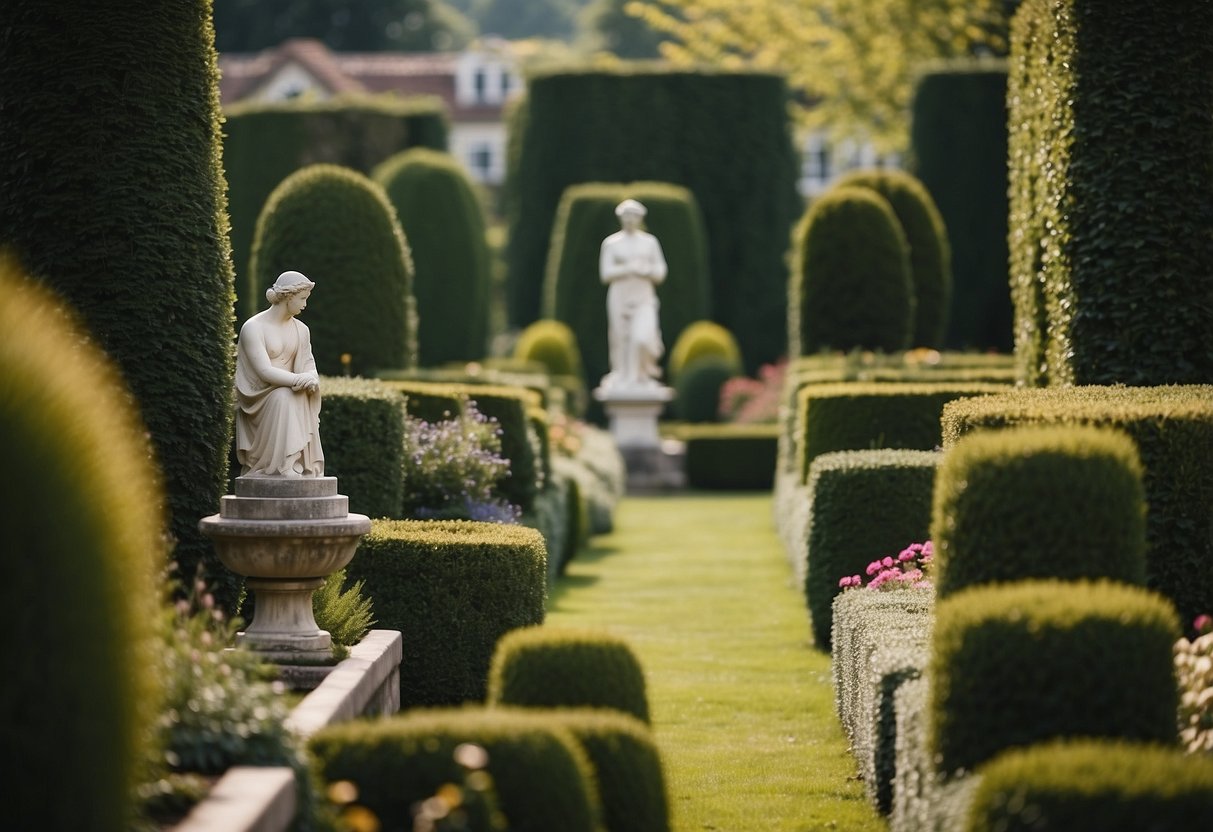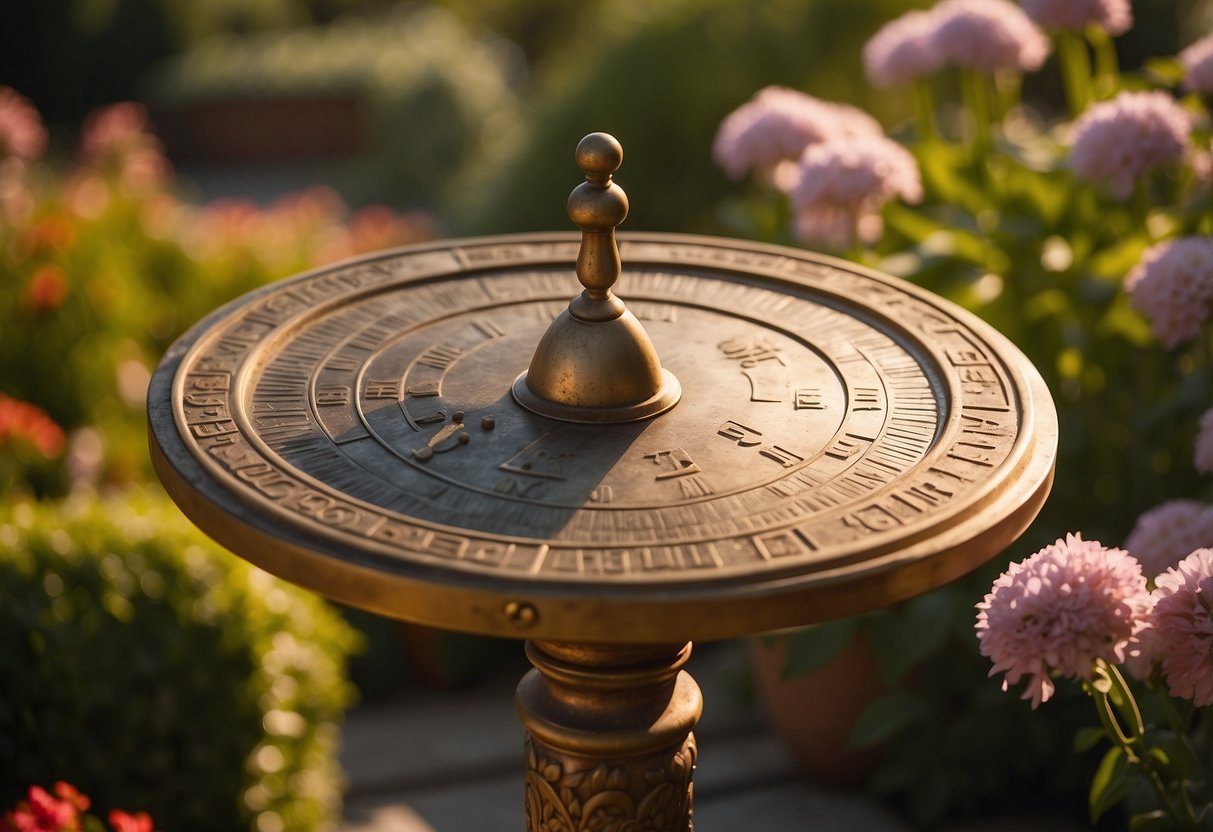Georgian Garden Ideas: Create Timeless Elegance in Your Backyard
When you think of creating a beautiful and timeless garden, Georgian garden ideas can be a great source of inspiration. These designs focus on natural beauty and elegant features that blend seamlessly with the landscape. What makes Georgian gardens unique is their balance between structured elements and a flowing natural feel.

You don’t need a grand estate to enjoy the charm of a Georgian garden. With some creativity, you can incorporate these ideas in your own backyard. Whether it’s through elegant pathways or simple water features, there’s something for every space and taste.
1) Clipped Box Hedges

Clipped box hedges are a fantastic addition to any Georgian garden. They offer a clean and classic look that suits the elegant style of the era.
These hedges are usually made of boxwood, which is easy to shape and maintain. You can trim them into neat, geometric forms to line pathways or frame your garden beds.
Using clipped box hedges can also add structure and a sense of order to your garden. They complement a variety of plants and flowers, making them a versatile choice in garden design. Consider using them to create beautiful, defined borders in your outdoor space.
2) Topiary Sculptures

Topiary sculptures bring a sense of artistry to your Georgian garden. These green masterpieces can be shaped into various forms, from simple cubes to intricate animals.
Start with hardy plants like juniper or boxwood, which are well-suited for topiary work. Use proper tools and take your time to trim plants carefully.
Consider adding topiary in different shapes to divide garden areas or create eye-catching focal points. This timeless practice enhances the elegance and beauty of your garden.
For more tips, visit this guide on topiary.
3) Herbaceous Borders

Herbaceous borders can add color and life to your garden. These borders feature a variety of perennial plants that bloom at different times of the year.
You can include plants like basil, thyme, and sage for both beauty and a pleasant scent. A well-planned herbaceous border will keep your garden looking vibrant throughout the growing season.
Herbaceous borders became popular in the 19th century and are now a common sight in many gardens. They are a versatile and attractive option for garden design. To learn more, you can explore the concept of a herbaceous border.
4) Ornamental Fountains

Ornamental fountains add a touch of elegance to any Georgian garden. They can be the centerpiece of your outdoor space, providing a calming atmosphere with the sound of running water.
Consider designs with classic elements like stone or terracotta. For a more traditional look, you can explore ideas from the Garden fountain ideas article.
Adding an ornamental fountain creates a focal point that draws the eye. Pair it with neatly trimmed hedges and flower beds to enhance the overall beauty of your garden.
5) Gravel Pathways

Gravel pathways can add a charming and practical touch to your Georgian garden. Using gravel helps keep your paths clean and tidy. It also cuts down on maintenance.
Gravel gives you a lot of flexibility in designing your paths. You can choose different colors and types to match your garden’s style.
You can also use stepping stones in your gravel pathways for a more structured look. This makes walking around your garden easier and more enjoyable.
6) Espaliered Fruit Trees

Espaliered fruit trees are a great way to add beauty and function to your Georgian garden. They grow flat against walls or fences, saving space and adding an elegant touch.
Figs, pomegranates, and citrus trees are perfect choices. Figs and pomegranates can be trained into pretty shapes like cordons or candelabras.
To get started, plant trees about 8-10 inches from your support structure. This gives the roots enough room to grow while making training easier. Good planting techniques will help your trees thrive and look lovely throughout the seasons.
7) Rustic Pergolas

Rustic pergolas add charm and character to your Georgian garden. These structures can provide shaded areas to relax and enjoy the outdoors. You might consider using treated pine or cedar, which can be stained to match the natural surroundings of your garden.
Adding climbing vines to your pergola creates a beautiful, natural look. Stringing outdoor lights can make the space even more inviting in the evenings. For more inspiration, check out some rustic outdoor pergola ideas.
8) Geometric Flower Beds

Geometric flower beds give your garden a clean, modern look. Use straight lines, circles, or squares to create defined spaces for your plants. You can mix different shapes to add more interest to your garden.
Combine flowers of various colors to make these shapes pop. Bright flowers in a square bed or circles of blooming plants can be striking. Make sure to choose plants that complement each other and thrive in your garden’s conditions.
Using borders like stone or metal edging can help maintain the crisp lines of your geometric beds. This keeps the design clear and neat year-round.
9) Stone Statues

Stone statues can add a classic touch to your Georgian garden. These statues often depict mythological figures, animals, or simply abstract designs. You might place them at focal points like along pathways or near water features.
When choosing stone statues, look for ones that complement the serene and elegant style of your garden. They can serve as timeless pieces, guiding your gaze as you stroll through. For additional ideas, check out some garden sculpture suggestions that could work well in your space.
10) Sun Dials

Sun dials are a charming addition to any Georgian garden. They combine science and art, creating a decorative yet functional piece.
Place your sun dial in a sunny spot to ensure it works correctly. A garden setting with plenty of light will make your sun dial a standout feature.
Garden sun dials come in various styles and materials, adding a unique touch to your outdoor space. You can find tips on choosing and installing sun dials from here and here.
Key Features of Georgian Gardens

Georgian gardens emphasize balance, symmetry, and a structured layout. These gardens often feature formal layouts and focal points that draw the eye across the space.
Symmetry and Order
Symmetry and order are fundamental in Georgian gardens. Gardens are often designed with clean lines and precise geometrical shapes. You’ll see mirrored designs on either side of a central path, creating a harmonious and balanced look.
Maintaining this symmetry requires regular trimming and pruning. Plants are carefully placed to ensure a neat and orderly appearance. The use of hedges and neatly maintained flower beds helps preserve the tidy aesthetic.
A structured layout with clear boundaries is key. Pathways are often straight, guiding visitors in a controlled manner through the garden.
Parterres and Formal Layouts
Parterres are intricately designed garden beds, often with symmetrical patterns. These are typically bordered by low hedges and filled with colorful flowers or gravel. They are meant to be viewed from above, usually from a terrace or the upper floors of a house.
Formal layouts feature geometric designs, emphasizing control and precision. Using items like stone pathways and brick walls, the garden is divided into sections, each with a distinct function and style. Water features such as ponds or fountains are common, adding elegance to the space.
Using clipped topiaries and ornamental trees, the design achieves visual appeal and structured beauty.
Statues and Focal Points
In Georgian gardens, statues often serve as focal points. Positioned at the end of a path or in the center of a parterre, they draw attention and add interest. These statues are often of mythological figures, adding a touch of classical charm to the garden.
Ornamental vases and urns are also common, placed strategically to enhance the visual appeal. Stone benches and decorative columns are used to create resting spots and highlight certain areas.
Overall, the use of statues and other elements helps to guide the eye and create a sense of purpose and direction in the garden.
Plant Choices for Georgian Gardens

When choosing plants for a Georgian garden, it’s important to mix structure with elegance. Versatile boxwood hedges provide order, while classic roses and perennials add vibrant color and timeless beauty.
Versatile Boxwood Hedges
Boxwood hedges are a staple in Georgian garden design. They are known for their flexibility and can be shaped into various forms, such as straight lines, rounded shapes, or intricate patterns. Boxwoods stay green throughout the year, providing a consistent backdrop.
Maintenance is key with boxwoods. Regular trimming keeps their shape tidy and ensures healthy growth. Boxwoods also thrive in well-draining soil, so make sure the ground is prepared properly.
Boxwoods can be used to create borders around flower beds or to line pathways. This gives your garden a formal feel that’s characteristic of Georgian style. Also, consider pairing boxwoods with flowering plants to break up the green and add visual interest.
Classic Roses and Perennials
Roses are a timeless choice for any Georgian garden. Their fragrant blooms and variety of colors make them a standout feature. Climbing roses can be grown over trellises or garden walls, creating dramatic vertical interest.
When planting roses, choose a sunny spot as they need plenty of sunlight to thrive. Water them regularly, but avoid wetting the leaves to prevent diseases. Pruning is essential—remove dead or weak growth to encourage new blooms.
Pairing roses with perennials like lavender or peonies adds layers of beauty. Lavender’s purple hues and peonies’ lush blooms complement roses well. They also attract butterflies, adding life to your garden. Make sure to space these plants properly to allow for airflow and growth.
Incorporate these plants thoughtfully to balance structure and elegance in your Georgian garden.
Incorporating Water Features

Adding water features to your Georgian garden can significantly enhance its appeal. Reflective pools and elegant fountains are two classic options that provide both beauty and tranquility.
Reflective Pools
Reflective pools create a sense of calm and elegance in your garden. These pools are typically shallow and have a still surface that mirrors the surrounding environment. Position them to reflect garden structures, trees, or the sky.
Incorporate stone or marble edging to maintain a clean, defined look. Surround the pool with lush plants or cut hedges for contrast. By placing benches nearby, you create a perfect spot to relax and enjoy the serene reflections.
Lighting can also be an essential feature. Install subtle underwater lights to highlight the pool at night. Soft lighting adds a beautiful glow to your garden, making it enjoyable even after the sun sets.
Elegant Fountains
Elegant fountains are a staple in Georgian garden design. They can act as a focal point, drawing attention to specific areas of your garden. Choose a classic design such as a tiered fountain or one with sculpted figures.
Position your fountain in a central or prominent location. This ensures it is easily visible and accessible. You may also want to use natural stone or bronze materials to keep with the traditional Georgian aesthetic.
The sound of cascading water from the fountain provides a soothing ambiance. This can help mask unwanted noises, creating a more peaceful atmosphere in your garden. Planting flowers or shrubs around the base can further enhance its beauty.
Keep your fountain maintained by regularly cleaning and checking the water pump. This ensures it remains a significant, functioning centerpiece in your garden.







